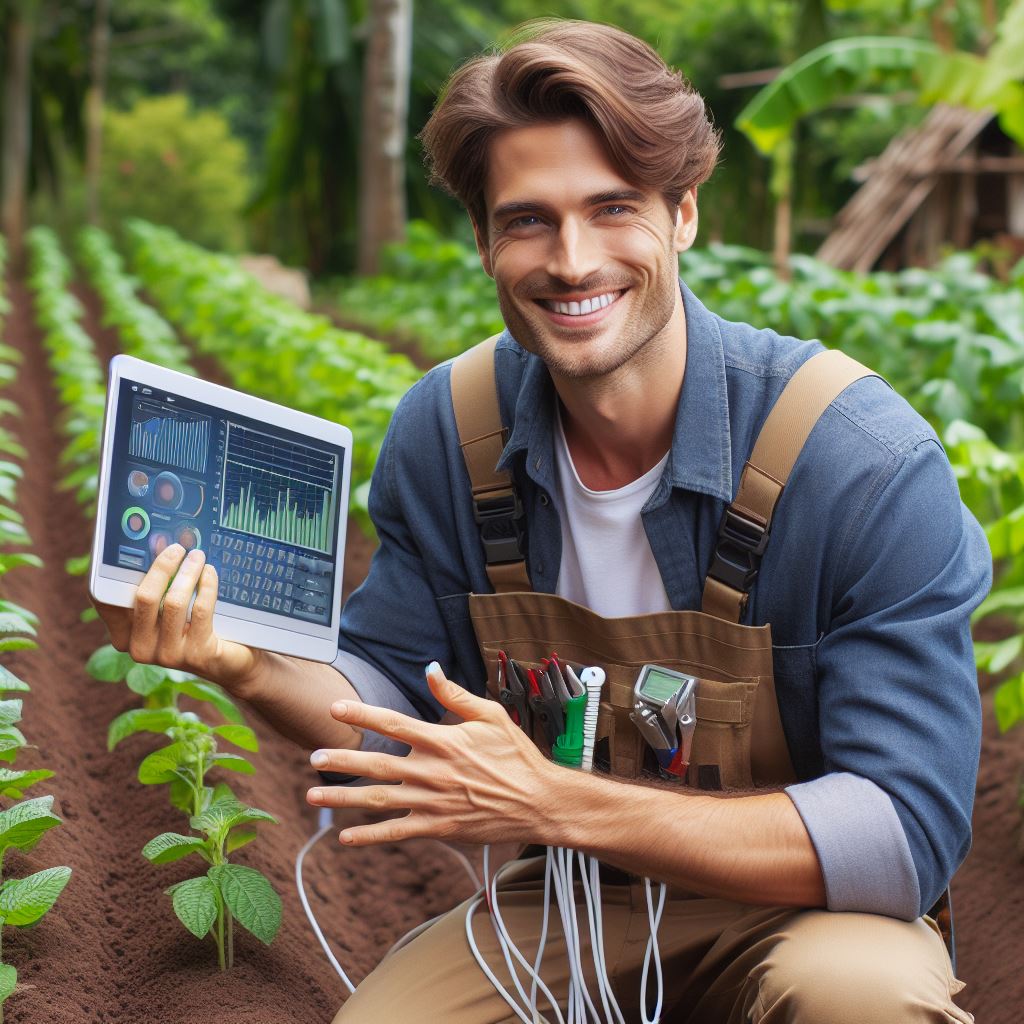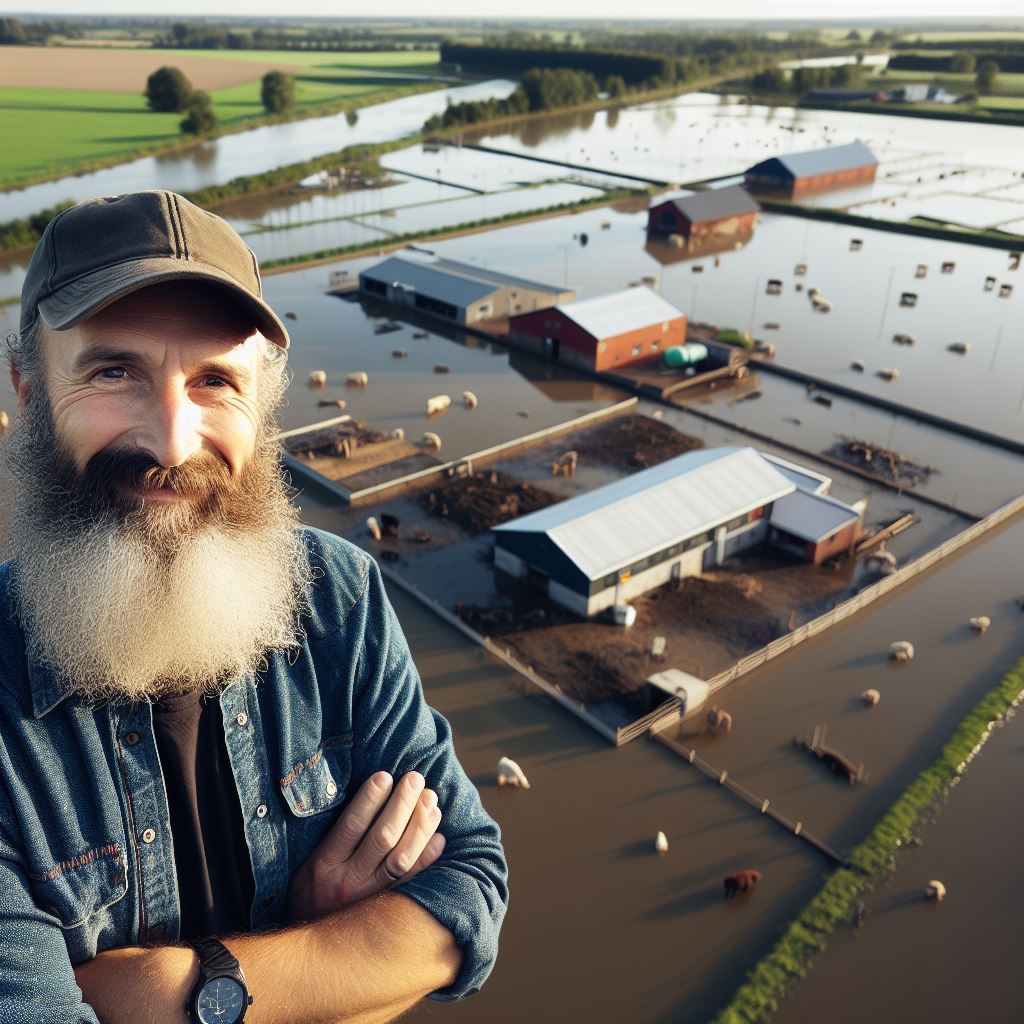Introduction
Soil degradation is the process of soil quality deterioration due to human activities that lead to loss of soil fertility, structure, and biodiversity.
Addressing soil degradation is crucial as it affects food production, ecosystem health, and climate change mitigation.
Without healthy soils, crop yields decrease, food security is compromised, and poverty levels increase.
Additionally, soil degradation contributes to erosion, desertification, and greenhouse gas emissions.
The consequences of soil degradation are far-reaching, impacting both rural and urban areas.
It is essential to find innovative solutions using technology to combat soil degradation.
Technological advancements can help monitor soil health, detect soil pollution, and assess nutrient levels.
Remote sensing technologies, such as satellite imagery, can provide accurate and timely data on soil conditions.
Precision agriculture techniques, like soil sensors and drones, enable farmers to apply fertilizers and irrigation more efficiently.
Furthermore, soil remediation technologies, such as bioremediation and phytoremediation, can help restore degraded soils.
These technologies utilize microorganisms and plants to remove contaminants and enhance soil quality.
Incorporating technology-driven approaches will not only improve soil health but also conserve natural resources.
By embracing these advancements, we can protect our soil, ensure sustainable food production, and mitigate climate change.
Investing in research, development, and implementation of technology is paramount to fighting soil degradation effectively.
Addressing soil degradation through technology is an urgent global priority that requires collaboration between scientists, farmers, and policymakers.
Transform Your Agribusiness
Unlock your farm's potential with expert advice tailored to your needs. Get actionable steps that drive real results.
Get StartedTogether, we can build a future where our soils are healthy, productive, and resilient, benefiting both people and the planet.
Understanding soil degradation
Causes of soil degradation
Soil degradation is a significant issue that threatens agricultural productivity and food security worldwide.
Understanding the causes and impact of soil degradation is crucial in developing effective strategies to combat this problem.
Erosion
Erosion, one of the main causes of soil degradation, occurs when the topsoil is washed away by wind or water.
This leads to the loss of essential nutrients and organic matter necessary for plant growth.
Compaction
Compaction is another factor that contributes to soil degradation.
It happens when the soil becomes densely packed, reducing its ability to hold water and nutrients.
This, in turn, affects the root development of plants and hinders their growth.
Chemical degradation
Chemical degradation, caused by excessive use of fertilizers and pesticides, is another significant concern.
The accumulation of these chemicals in the soil leads to long-term damage, affecting soil fertility and overall ecosystem health.
Impact on agriculture and food production
The impact of soil degradation on agriculture and food production is substantial.
Decreased soil fertility makes it difficult for plants to absorb essential nutrients, resulting in stunted growth and decreased crop quality.
Reduced crop yields
Reduced crop yields are a direct consequence of soil degradation.
Infertile and nutrient-deficient soil cannot support the optimal growth of crops, leading to lower yields and ultimately affecting food production.
Increased water pollution
Soil degradation also contributes to increased water pollution.
When the topsoil is eroded, it enters water bodies, carrying with it harmful chemicals and sediments.
This negatively impacts the quality of water, making it less suitable for both human consumption and aquatic life.
Addressing soil degradation requires a multi-faceted approach, and technology plays a crucial role in combating this issue.
Advanced tools such as remote sensing and satellite imagery can provide detailed information about soil health, allowing farmers to make informed decisions regarding soil management.
Precision agriculture techniques, such as the use of GPS and sensor technology, enable farmers to apply fertilizers and water precisely where and when needed, minimizing waste and reducing the risk of soil degradation.
Conservation practices like terracing, contour plowing, and agroforestry can significantly help in preventing erosion and maintaining soil fertility.
These techniques promote water infiltration, reduce runoff, and enhance soil structure, contributing to sustainable agriculture.
Furthermore, sustainable farming practices, such as crop rotation, cover cropping, and organic farming, can help restore soil health and prevent soil degradation.
By diversifying crops and incorporating organic matter into the soil, these practices enhance soil fertility, improve water-holding capacity, and reduce the need for synthetic inputs.
Collaboration between researchers, policymakers, and farmers is crucial in implementing and promoting these sustainable practices.
Education and awareness programs can help farmers understand the significance of soil health and the potential consequences of soil degradation.
In fact, soil degradation poses a severe threat to agriculture and food production.
Erosion, compaction, and chemical degradation are primary causes of soil degradation, resulting in decreased soil fertility, reduced crop yields, and increased water pollution.
Harnessing technology and implementing sustainable farming practices are essential in the fight against soil degradation, ensuring a secure and sustainable food future.
Transform Your Agribusiness Online Presence
Stand out with compelling content tailored to engage your audience and drive results. From blog posts to social media, we’ll create what your business needs to grow.
Get StartedRead: Livestock Farming: Adapting to Climate Shifts
The role of technology in fighting soil degradation
Soil degradation is a serious concern that affects agricultural productivity and the environment.
Fortunately, advancements in technology have provided innovative solutions to combat this problem.
Soil sensors
One of the most significant technological advancements in fighting soil degradation is the use of soil sensors.
Monitoring soil moisture levels
Soil sensors can accurately measure soil moisture levels, allowing farmers to determine the appropriate amount of water needed for irrigation.
Preventing over-irrigation
Over-irrigation can lead to waterlogging and nutrient leaching, causing soil degradation. Soil sensors help prevent this problem.
Precision agriculture
Precision agriculture employs technology to optimize farming practices and minimize environmental impact.
Targeted application of fertilizers and pesticides
Precision agriculture enables farmers to precisely apply fertilizers and pesticides, reducing excess usage and potential soil contamination.
Monitoring plant health
Using advanced sensors and imaging techniques, farmers can monitor plant health in real-time and take necessary actions to prevent soil degradation.
Conservation tillage practices
Conservation tillage practices aim to minimize soil disturbance and maintain soil health.
Reducing erosion and compaction
By avoiding excessive tillage, conservation practices help reduce soil erosion and compaction, preserving soil structure.
Preserving soil organic matter
Conservation tillage practices also help preserve soil organic matter, which is crucial for soil fertility and overall health.
In short, technology plays a pivotal role in combating soil degradation.
Read: Soil Conservation Techniques in Drought

Case studies on technology-driven soil degradation solutions
Soil erosion control through terracing and contour farming
- Terracing and contour farming are effective methods for controlling soil erosion.
- These techniques involve creating ridges and furrows on the land to slow down water runoff.
- The ridges and furrows help to trap sediment and prevent it from being washed away.
- This method is particularly useful on sloped land or areas prone to heavy rainfall.
Benefits and implementation
- Terracing and contour farming have numerous benefits for soil conservation.
- They help to reduce soil erosion, prevent nutrient depletion, and improve water infiltration.
- These methods also promote biodiversity and provide habitat for beneficial insects and animals.
- Implementation of terracing and contour farming requires careful planning and design.
Integration of cover crops and crop rotation
- Cover crops and crop rotation are important practices for improving soil health.
- Cover crops are planted between cash crops to protect the soil from erosion.
- They also help to improve soil fertility, suppress weeds, and increase organic matter content.
- Crop rotation involves alternating the types of crops grown in a field each growing season.
Preventing nutrient depletion and erosion
- Nutrient depletion and erosion can be prevented through proper soil management techniques.
- Implementing nutrient management plans and using soil amendments can help to replenish nutrients.
- Conservation practices such as no-till farming and cover cropping can also help prevent erosion.
- These practices reduce the amount of exposed soil and protect it from wind and water erosion.
Use of biochar for soil amendment
- Biochar is a type of charcoal that is used as a soil amendment.
- It is created by heating organic materials, such as wood or agricultural waste, in a low-oxygen environment.
- Biochar helps to improve soil fertility, water-holding capacity, and nutrient retention.
- It can also sequester carbon dioxide and mitigate climate change.
Improving soil structure and fertility
- Technology-driven solutions can help improve soil structure and fertility.
- Techniques such as soil aeration and composting can enhance soil structure.
- Adding organic matter, such as compost or manure, can improve soil fertility and nutrient availability.
- These practices lead to healthier soils and increased crop productivity.
In essence, technology-driven solutions offer effective ways to combat soil degradation.
Unlock Farming Insights for Growth
Make smarter farming decisions with detailed reports on market trends, weather patterns, and soil health tailored to your farm's success. Boost productivity with actionable data.
Get Report- Case studies have demonstrated the success of techniques such as terracing, contour farming, and cover cropping.
- Implementing these practices can help prevent soil erosion, nutrient depletion, and improve soil fertility.
- By taking advantage of these solutions, we can protect and preserve our most valuable resource – the soil.
Read: Soil Conservation Techniques in Drought
Challenges and limitations of using technology for soil degradation
Technology has emerged as a promising tool in combating soil degradation.
However, its implementation comes with several challenges and limitations that need to be addressed for effective results.
Let’s delve into these issues and explore possible solutions.
Initial Costs and Implementation Barriers
Integrating technology into soil degradation management requires substantial initial investments.
Farmers and landowners often face financial constraints in procuring advanced equipment and systems.
Additionally, the lack of infrastructure and support services can further hinder technology adoption.
To overcome this challenge, governments and organizations should provide financial assistance and incentives to promote the use of technology for soil rehabilitation.
Education and Training Requirements
Effective utilization of technology for soil degradation demands knowledge and skills.
Farmers and stakeholders might lack the necessary training to operate complex systems and interpret data.
This gap can impede the adoption of technology-driven approaches.
Governments and agricultural institutions need to prioritize providing comprehensive education and training programs to equip individuals with the required expertise.
Environmental Concerns and Unintended Consequences
While technology offers promising solutions, it is crucial to consider potential environmental concerns and unintended consequences.
The indiscriminate use of agrochemicals and synthetic fertilizers, for instance, can degrade soil fertility and damage ecosystems.
Striking a balance between technological advancements and sustainable practices is essential.
It is imperative to develop innovative technologies that minimize negative impacts and prioritize sustainable approaches.
Lack of Customization and Adaptability
Different regions and ecosystems face varying soil degradation challenges.
One-size-fits-all technology solutions might not be effective in addressing these localized issues.
Customization and adaptability of technology are crucial to meet region-specific requirements.
Governments, researchers, and technology developers should collaborate to design flexible systems that cater to diverse soil conditions and degradation factors.
Possible Solutions
- Form public-private partnerships to leverage resources and accelerate technology accessibility.
- Establish demonstration farms to showcase the benefits of using technology in soil degradation management.
- Encourage research and development in affordable and user-friendly technology options.
- Collaborate with agricultural extension services to provide on-site training and support for farmers.
- Conduct comprehensive environmental impact assessments before implementing large-scale technology interventions.
- Establish regulations and standards to ensure responsible use of technology and prevent any adverse effects.
- Foster knowledge-sharing networks and platforms to facilitate the exchange of best practices and lessons learned.
In review, technology presents significant potential in fighting soil degradation.
However, several challenges and limitations must be addressed to ensure its successful implementation.
Governments, agricultural institutions, and stakeholders need to work collaboratively to overcome barriers related to costs, education, sustainability, and customization.
By doing so, we can harness the power of technology to restore and preserve our valuable soils for future generations.
Read: Smart Irrigation in Dry Farming
Conclusion
Addressing soil degradation is of utmost importance for the sustainability of our planet.
As highlighted throughout this blog section, the role of technology in combating soil degradation cannot be underestimated.
By harnessing the power of technological advancements, we have the potential to develop innovative solutions that can restore and protect our soils.
These solutions involve the use of precision agriculture techniques, soil sensors, and data analytics to optimize soil health and productivity.
It is crucial for individuals, governments, and organizations to recognize the benefits of technology-driven soil degradation solutions and actively promote their adoption.
By doing so, we can ensure the long-term viability of our agricultural systems, preserve biodiversity, and mitigate the impacts of climate change.
Furthermore, investing in research and development of new technologies is crucial to continuously improve soil conservation practices.
This can lead to more efficient and sustainable methods that can be implemented on a larger scale.
Ultimately, the fight against soil degradation requires a collective effort and a commitment to embracing technology-driven solutions.
We must prioritize the protection and restoration of our soils, as they are the foundation of our food systems and the key to securing a sustainable future for generations to come.
It is time to harness the power of technology to combat soil degradation – our planet’s health depends on it.




